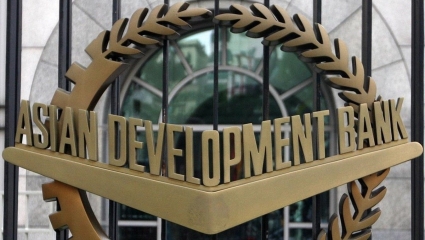Bond Yields Rise in Emerging East Asia amid Aggresive Monetary Tightening
Regional currencies fell against the US dollar, equities dropped, and risk premiums widened between 31 August and 4 November, according to the latest update of Asia Bond Monitor, released today. Portfolio outflows were also seen in most regional bond markets.
Global inflation, slower growth in the People’s Republic of China (PRC), and economic fallout from the Russian invasion of Ukraine continued to threaten the region’s short-term prospects.
“Financial conditions in emerging East Asia weakened at a faster pace in September and October than in the first eight months of 2022, due to the aggressive tightening by the US Federal Reserve,” said ADB Chief Economist Albert Park. “However, the region remains largely resilient so far, despite various headwinds.”
Local currency bond issuance in emerging East Asia contracted 1.1% from the previous quarter to $2.2 trillion in the third quarter, amid subdued investment sentiment. Local currency bonds outstanding grew 2.3% to $22 trillion. Emerging East Asia comprises member economies of the Association of Southeast Asian Nations (ASEAN); the PRC; Hong Kong, China; and the Republic of Korea.
Government bond issuance dropped 4.5% from the previous quarter, while corporate bond issuance grew 5.7%, largely supported by Chinese companies taking advantage of domestic monetary easing measures. Rising interest rates drove a 2.0% decline in corporate bond issuance in ASEAN markets.
The sustainable bond market in the ASEAN region plus the PRC; Hong Kong, China; Japan; and the Republic of Korea grew 1.7% to $521.6 billion at the end of September. While the growth was slower than in the previous quarter, the segment witnessed improved diversification in terms of market profile and bond types.
After strong growth in the previous quarter, Viet Nam’s local currency bond market contracted 0.2% due to a decline in the government bond market and slower growth in corporate bonds. On an annual basis, the market increased 21.1% to $97.4 billion.
Government bonds contracted 2.0% as the outstanding stock of central bank bills fell 70.3% from the previous quarter. Outstanding government bonds reached $67.3 billion.
Expansion of corporate bonds moderated to 4.1% from the previous quarter, putting the segment at $30.1 billion.
The latest issue of Asia Bond Monitor features notes on two special topics: the relationship between regional trade integration and regional financial integration, and the promotion of financial stability and resilience to shocks through the development of local currency bond markets.
ADB is committed to achieving a prosperous, inclusive, resilient, and sustainable Asia and the Pacific, while sustaining its efforts to eradicate extreme poverty. Established in 1966, it is owned by 68 members—49 from the region.
Các tin khác

Standard Chartered Forecast Vietnam 2023 GDP Growth at 7.2%

Tough year expected for banks in 2023

Vietnam’s Hiking Cycle Under Way, HSBC Says

Amazon Global Selling Vietnam Reveals its 2022 Vietnam SMEs Empowerment

Vietnam: Bracing for a Trade Winter

Asia Economies to Benefit from China’s Opening in Second Half 2023

One More HDBank Leader Registered to Buy HDB Shares

Sign of a Loan Agreement for Ninh Thuan Province Onshore Wind Power Project

ADB, BIM Wind Sign $107 Million Financing Package to Support Wind Energy in Viet Nam

International Agreement to Support Vietnam’s Ambitious Climate and Energy Goals

Vietnam to Receive $15.5 billion for Energy Transition

FPT Announced Business Results in the 11 Months of 2022

ADB Lowers Growth Forecast for Developing Asia amid Global Gloom

Amazon Announces its Biggest Holiday Shopping Weekend Ever

Unilever Vietnam to Consolidate the Position in Circular Economy

HSBC: The Vital Role of Voluntary Carbon Markets

Archetype Group Celebrated 20 Years of Growth

ADB, HAYAT KIMYA to Support for Women and Children’s Lives in Vietnam

HDBank is the Large-Cap Listed Company With the Best Annual Report 2022







